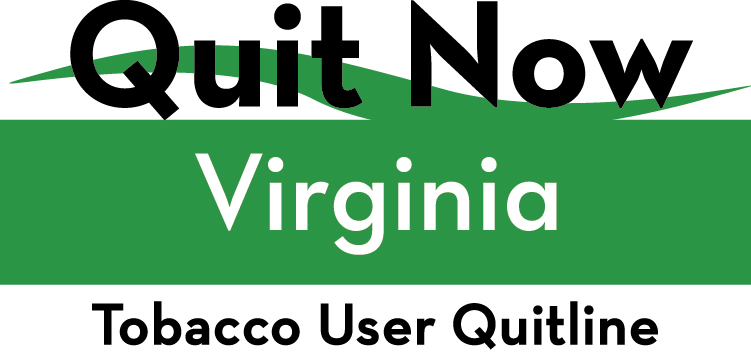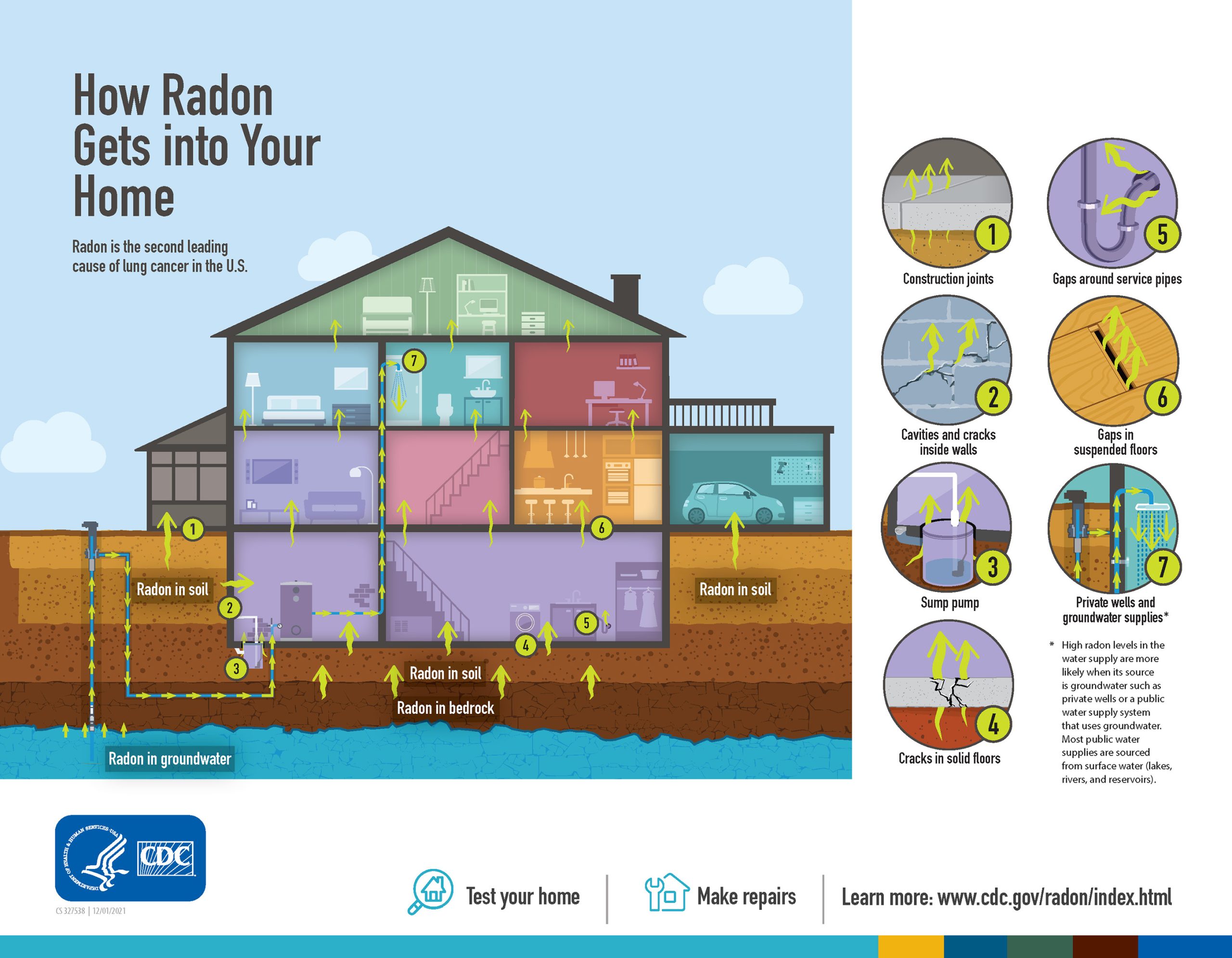
This page has information about radon exposure and discusses steps you can take to protect your health and home.
Remember the only way to know if your home has a radon problem is to test for it.
What is Radon?
Radon is a dangerous naturally occurring radioactive gas that you can not see, smell or taste.
Health Risk
Exposure to Radon is considered second only to smoking as the leading cause of lung cancer.
Lung cancer is the only health effect that is certainly linked with radon exposure. In addition, Radon exposure can also impact Indoor Air quality (IAR).
Where Does Radon Come From?
Radon is the decay product of metals found in the earth's crust. It is present in almost all rock, and all soil and water (EPA).
Once Radon gas forms it can seep into your home from exposed dirt from a crawl space, plumbing cut-out or old cellar. Radon gas can also pass through openings in your foundation such as unsealed sump pumps, drains, joints, cracks, and open top block walls. In certain areas radon may be found from drinking water that comes from private wells. The highest levels of radon are usually found in the lowest areas of the home, such as basements or other rooms in direct contact with the ground (VDH).
Testing
The Radon concentration measure is in picoCuries/Liter (pCi/L).
- The U.S average indoor radon level is about 1.3 pCi/L.
- The average outdoor radon level is about 0.4 pCi/L.
The Radon Action Level means to take action to reduce your indoor levels as VDH recommends if your test results are 4.0 pCi/L or higher.
- If the home tests at 4.0 pCi/L or above. Retest the home for confirmation.
How?
![]()
- Use approved NRSB or NRPP radon test devices such as the short-term test you can order through VDH.
- The test device should be placed at least 20 inches above the floor and well away from outside walls, fans, windows, areas of high humidity (like bathrooms & laundry rooms) or openings in the floor (like sumps and plumbing cut-outs).
- Every section of the home that is in contact with the ground should be tested.
- Frequently occupied rooms (like bedrooms & family rooms) should be tested.
When?
- VDH recommends testing your home with a short-term (3-7 day) test between October and early May.
- Indoor radon usually reaches its highest concentration during the coldest winter months.
- Short-term testing should not be done during heavy rain and or high winds.
- Radon Testing should be avoided in the summer.
(Shipping and lab fees already included)
- VDH is offering a limited supply of $3 radon home test kits.
- Alternative resources for purchasing test kits can be found through the EPA and National Radon Program Services.
Did You Know?
25% of radon test results reveal homes in Virginia have indoor radon levels that were at or above the action level recommended by the EPA (ALA, 2022).
![]()
The only way to know if your home has a radon problem is to test for it. EPA & VDH recommend that ALL homes be tested for radon – especially those being purchased and newly constructed.
(Shipping and lab fees included)
Mitigation & Prevention
Most homes can successfully reduce the radon levels down below 2.0 pCi/L through different methods.
- Professional Radon testers and mitigators who are currently certified according to Virginia law can be found on the following websites: www.nrsb.org and www.nrpp.info.
- The cost of these methods varies for most homes, depending on the size and design. *
- Learn more about the different Mitigation Methods in the EPA's Consumers Guide to Radon Reduction.
Reduce Risk of Lung Cancer:

- Current and ex-smokers have a greater risk of developing lung cancer from radon exposure than non-smokers.
- Find free support and resources to help stop smoking at 1-800-QUIT-NOW or at Quit Now Virginia.
Minimize the time spent in the lowest level of your home:
- Radon levels are usually at least 25% higher there.
Increase the ventilation of your lowest level:
- Open windows and doors (when exterior weather conditions permit), adjust heating and air conditioning systems to increase ventilation, leave crawl space vents open, etc.
Seal visible/accessible openings in your foundation:
- Seal cracks, gaps & holes using sealant like polyurethane caulk, put an air-tight lid on sumps, cover/encase bare soil with a well-sealed plastic barrier or concrete.
Obtain a good portable electrostatic or HEPA air filter or use a whole house HVAC filter with a MERV rating of 8 or higher:
- These filters may reduce the amount of short-lived radon decay products (RDPs) in your indoor air. Unlike radon gas, these elements are solids that can be trapped.
- The RDPs account for most of the actual lung cancer risk associated with radon.

